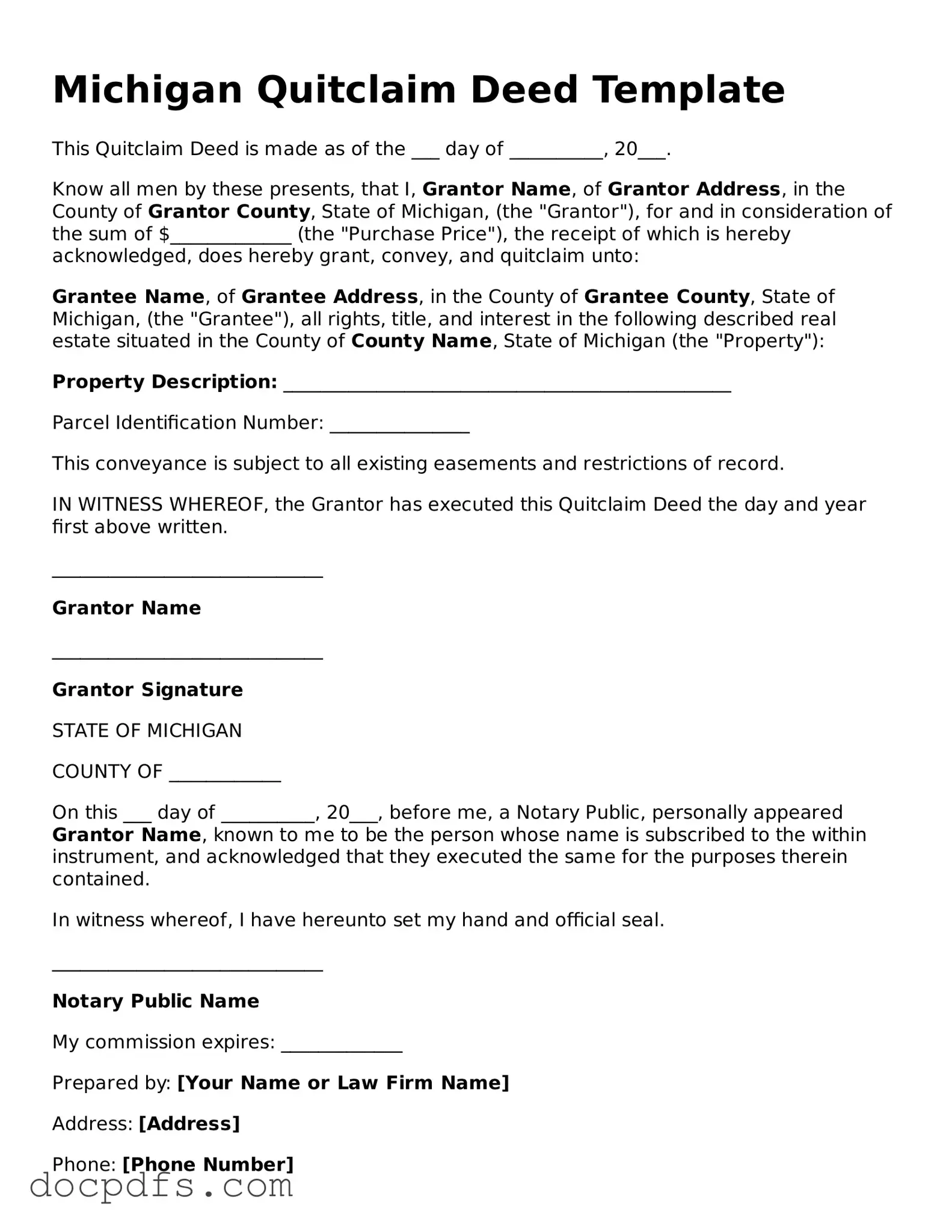What is a Quitclaim Deed?
A Quitclaim Deed is a legal document used to transfer ownership of real estate from one person to another. It allows the seller, known as the grantor, to transfer whatever interest they have in the property to the buyer, known as the grantee. This type of deed does not guarantee that the grantor has clear title to the property, meaning it does not protect the grantee from any claims against the property.
When should I use a Quitclaim Deed?
A Quitclaim Deed is often used in specific situations, such as:
-
Transferring property between family members.
-
Removing a spouse from the title after a divorce.
-
Transferring property into a trust.
-
Clarifying ownership among co-owners.
It is important to understand the implications of using a Quitclaim Deed, as it does not provide the same protections as other types of deeds.
How do I complete a Quitclaim Deed in Michigan?
To complete a Quitclaim Deed in Michigan, follow these steps:
-
Obtain the Quitclaim Deed form, which can be found online or at local government offices.
-
Fill in the names of the grantor and grantee, along with a legal description of the property.
-
Sign the form in front of a notary public.
-
File the completed deed with the county register of deeds in the county where the property is located.
Make sure all information is accurate to avoid any issues with the transfer.
Do I need a lawyer to prepare a Quitclaim Deed?
While it is not required to have a lawyer prepare a Quitclaim Deed, consulting with one can be beneficial. A lawyer can help ensure that the deed is filled out correctly and that all legal requirements are met. This can prevent potential disputes or complications in the future.
Are there any fees associated with filing a Quitclaim Deed?
Yes, there are typically fees associated with filing a Quitclaim Deed. These fees can vary by county. It is advisable to check with your local county register of deeds office for the exact amount. Additionally, there may be costs for obtaining notarization.
What happens after I file a Quitclaim Deed?
After filing a Quitclaim Deed, the county register of deeds will record it. This recording makes the transfer of ownership official and public. It is important for the grantee to keep a copy of the recorded deed for their records. This document serves as proof of ownership.
Can a Quitclaim Deed be revoked?
Once a Quitclaim Deed is executed and recorded, it generally cannot be revoked. The transfer of property is considered final. If there are concerns about the deed, it is advisable to seek legal advice before signing. If a mistake was made, legal action may be necessary to address the issue.
